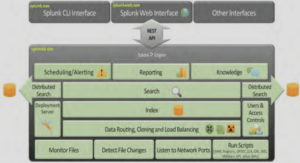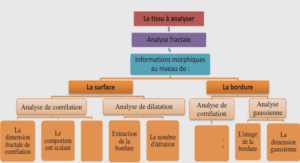Cutting Tool Materials
The cutting tool material is one of the important elements of the machining systems. Cutting tools are required to operate under high loads at elevated temperatures, often well in excess of 1000 C. The material and geometry of the tool must be precisely chosen according to the workpiece material to be machined, the kinematics and stability of the machine tool to be employed, the amount of the material to be removed, and the required accuracy and finishing. Figure 1-2 illustrates hardness as a function of temperature for several tool materials. Tool steel, before 1870 all lathe tools were forged from tool steel (carbon steel) consisting of about 1% carbon, 0.2% manganese, and the remainder iron. Carbon steel obtains its hardness and wear resistance by hardening process, which outputs a martensitic structure. These tools had a low hardness at elevated temperature (limited hot-hardness) and could only be used to machine steel at relatively low speeds (up to about 0.08 m/s) as shown in Figure 1-2. Tool steel for higher loads additionally contains approximately the composition 2% carbon, 1.6% manganese, 5.5% tungsten, and 0.4% chromium. As a result, it could be used to speeds of about 0.13 (m/s).
They are commonly applied for hand tools such as files and hand-reamers and for woodworking tools (Toenshoff & Denkena, 2013). High Speed Steel (HSS) developed by Taylor and White (1901) are used to cut material at higher speeds (0.32 m/s) with more stability. The composition of this HSS was approximately 1.9% carbon, 0.3% manganese, 8% tungsten, and 3.8% chromium. Later, there were two additional significant developments in HSS. The first development, T group (tungsten) contains tungsten, chromium, vanadium, cobalt and carbon as principal alloying elements, while M group contains molybdenum, tungsten, chromium, vanadium, cobalt, and carbon. The maximum working temperature of HSS is around 500 °C. The mean hardness of HSS is 70 HRC. HSS tools are tough and suitable for interrupted cutting. HSS are used to manufacture tools of complex shape such as drills, reamers, taps, end mill and gear cutters. Tools could be coated to improve wear resistance. HSS can be used at cutting speeds between 10 m/min to 60 m/min (Smith, 2008). Cemented Tungsten carbide tools were first developed in Germany in 1927 and produced by the Widia Corporation.
These tools consisted of finely ground tungsten carbide particles sintered together with cobalt binder. Gradually during the 1930s, tools of the greater shock resistance were produced, but carbide tools were used mainly to turn cast iron and nonferrous metals due to greater tendency for steel to cause tool-face cratering. In about 1938, it was found that the tendency for carbide tools to carter when cutting steel could be reduced by adding titanium and tantalum carbides. During World War II the use carbide tools expanded rapidly. Titanium and tantalum carbides are more stable than tungsten carbide and have a greater resistance to decomposition in the presence of -iron (FCC). Titanium carbides having a greater resistance to decomposition, have a dramatic effect on carter resistance of carbide tools when steel is machined at a high cutting speed (high tool-face temperature). The addition titanium carbide decreases the strength and abrasive wear resistance of tungsten carbide tool. Tantalum carbide also provides carter resistance with less loss of impact strength than titanium carbide since it gives rise to less grain growth during sintering but costs more than an equivalent amount of titanium carbide. The net result of all of this is that there are two types of sintered tungsten carbide- one for machining gray cast iron, nonferrous metals, and abrasive non-metals such as fiber glass and graphite (ISO K-type) and one for machining ferrous metals (ISO P-type) (Shaw, 2005). Ceramic tools are more refractory and harder than carbide tools, withstanding more than 1500 °C with good chemical stability. It recommends being used cut of hardened material (600 650 HV) at high cutting speed in dry cutting conditions. Ceramic tools are two basic types of ceramics: aluminum oxide based (Al2O3) and silicon-nitride based (Si3N4). The pure oxide-based ceramic has relatively low strength, toughness values, as well as low thermal conductivity. The additions of small amounts of zirconium oxide titanium, magnesium, chromium oxide to composition significantly improved toughness the pure ceramic. It is excellent for machining grey cast iron in dry and wet conditions at cutting speeds over 450 (m/min). The silicon-nitride ceramic has high toughness and high resistance thermal shock compared to pure oxide-based ceramic.
Classification of Cutting Edge Preparation Geometry There are different types of edge preparation design supply by tool designers and manufacturers of tools. The major types of edge preparation design (sharp, rounded, and chamfered) are used in commercial cutting tools as shown in Figure 1-4 and 1-5. The sharp edge can be defined by the intersection between the rake face and the flank face. It can be defined theoretically by the intersection of the rake face and the flank face of the cutting edge of tools. The sharp shape has an irregular and chipped profile with no specific parameters for the description. It is impossible to produce the ideal of cutting-edge shape. It is not suitable for many machining purposes due to its low instability against mechanical loads compared to the chamfered and rounded edges. The rounded edge, the ideal round is uniform curvature of the rounded profile between rake face and flank face on tool edge. Furthermore, if the rounded edge has a different curvature, it has other types of geometries, namely, trumpet shape and waterfall shape as shown in Figure 1-4 (b). Denkena et al. (Denkena, Reichstein, Brodehl, & de Leon Garcia, 2005) developed a characterization method to describe the asymmetrically rounded profile cutting edge. In this method, five parameters are obtained to describe the rounded profile of cutting edge as shown in Figure 1-5. The cutting-edge segment on the flank face (S) and the rake face (S) are the measure distance between the separation point of the cutting edge rounding and the tangent intersection between flank and rake faces, respectively. By on these values, the form-factor K (Kappa), which indicates the asymmetry of the curvature and the average cutting rounding ( ) can be calculated. A ratio of K equal to 1 identify ideal round edge (asymmetrical), k< 1 identifies waterfall shape (slope towards the flank face) and K >1 identify trumpet shape (slope towards the rake) face as shown in Figure 1-4 (b). In addition, profile flattening (r) and apex angle () are applied to characterize the tools bluntness by measuring the shortest distance and the shift between the ideal sharp tooltip and the actual shape of rounding. By means of those parameters, the cutting-edge profile becomes imaginable.
Microstructural
Influences on Machinability Microstructure plays an important role in the machinability of a material (Hamed Hoseiny et al., 2013). Material structures affect machinability in which some structures can be abrasive properties and the strength of materials is altered with the type of structure. The amount and form of the carbides influence the material property. Chandrasekaran et al. (Chandrasekaran & M’Saoubi, 2006) presented a study for the machinability of P20-type steel and AISI H13 hot work tool steels in the hardened condition. The study proves that the influence of the microstructure (precipitates and carbide distribution) on machinability can be stronger than that of machinability enhancing additives. Carbon is the most important alloying element in carbon steel, and depending on its content, different structures are obtained. There are three types of structures: ferrite, cementite, and pearlite, in addition to austenite that more directly influence machinability. Ferrite is ductile and soft, whereas cementite is hard and abrasive. Pearlite is a mix between ferrite and cementite in the form of lamellas of ferrite and cementite, and it raises an intermediate position in hardness. The hardness of lamellar pearlite additionally depends on the lamellas size. The fine lamellar pearlite type gives higher hardness than coarse.
The amount of ferrite, pearlite, and cementite in steel structure depends fundamentally on the carbon content. Even small amounts of cementite have considerable influence on tool life and therefore machinability. In addition, ferrite steels in common have better machinability than martensitic steels (Coromant, 1994). Demir (Demir, 2008) studies the effect of microalloyed steel pre-heat treatment on microstructure and machinability. The study indicated that the variation in machining properties of medium carbon microalloyed steel could be explained in terms of microstructure obtained through heat treatments. Figure 1-7 shows the evaluation of the microstructure for the microalloyed steel under various cooling conditions. Optical micrographs mentioned that the microstructure contains ferrite and pearlite structure, and the mean linear intercept grain sizes of as-received, air-cooled and furnace-cooled specimens were, respectively, 8, 7 and 9 m. From the figure, an increase is clearly seen in the cooling rate after heat treatment at 900°C for one hour, leading to finer grain sizes.
Surface Roughness Surface roughness plays an important role as it affects the fatigue strength, wear rate, coefficient of friction, and corrosion resistance of the machined components. In the machining process, the surface finish is influenced by several factors of the most important cutting tool (tool material, geometry edge preparation of tool), cutting parameters (cutting speed, feed rate, depth of cut), workpiece material characteristics, and cutting fluid (Singh & Rao, 2007). Kumar et al. (A. S. Kumar, Durai, & Sornakumar, 2003) investigated machinability of EN 24 steel (40 and 45 HRC) using alumina based ceramic cutting tools. Two types of ceramic (Ti[C,N] mixed alumina ceramic and zirconia alumina ceramic) tools were used. They found that Ti[C,N] mixed alumina ceramic tool produces the surface finish better than zirconia alumina ceramic. Ghani et al. (Ghani, Choudhury, & Hassan, 2004) found that good surface finish can be obtained when end milling of AISI H13 hardened steel using at high cutting speed, low feed and low depth of cut when using the Taguchi method.
Benga and Abrao (Benga & Abrao, 2003) experimentally investigated the influences of cutting speed and feed rate on surface roughness when cutting during machining of 100Cr6 bearing steel (6264 HRC) using ceramic and CBN tools. They found that feed rate was the highest significance factor on surface finish while cutting speed has less significance on the surface finish for both cutting tools. Vivancos et al. Vivancos, Luis, Ortiz, & Gonzalez, 2005) studied the effects of cutting parameters (cutting speed, feed rate, axial and radial depth of cut) on surface roughness and presented a mathematical model of surface roughness in high-speed milling of hardened steel using the technique of Design of Experiments (DOE). Yang et al. (Yang, Chuang, & Lin, 2009) applied the Taguchi method to optimize dry machining parameters in end milling operation when machining high-purity graphite. The experimental results indicated that the feed rate was the most important factor to achieve a good surface finish and to improve the groove difference based on the first-order model.
INTRODUCTION |






